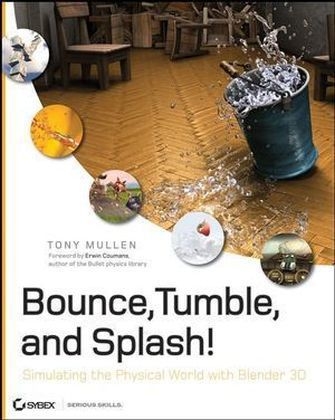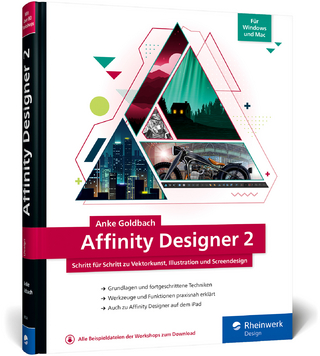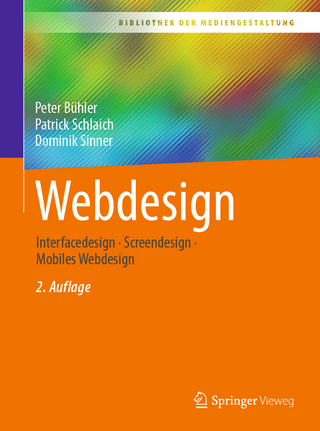
Bounce, Tumble, and Splash!
John Wiley & Sons Ltd (Verlag)
978-0-470-19280-1 (ISBN)
- Titel ist leider vergriffen;
keine Neuauflage - Artikel merken
Learn all about Blender, the premier open-source 3D software, in Bounce, Tumble, and Splash!: Simulating the Physical World with Blender 3D . You will find step-by-step instructions for using Blender's complex features and full-color visual examples with detailed descriptions of the processes. If you're an advanced Blender user, you will appreciate the sophisticated coverage of Blender's fluid simulation system, a review Blender's latest features, and a guide to the Bullet physics engine, which handles a variety of physics simulations such as rigid body dynamics and rag doll physics.
Tony Mullen, PhD, teaches at Tsuda College, Tokyo, where his courses include modeling and animation with Blender as well as the Python programming language. Mullen has been a cartoonist and an illustrator and has a broad background in CG-related work. His screen credits include writer, codirector, or lead animator on several short films, including the award-winning Gustav Braustache shorts. He is also the author of Introducing Character Animation with Blender (Sybex).
Foreword. Introduction. Chapter 1 Re-creating the World: An Overview. Re-creating the Physical World with Blender. Blender's Physical Simulation Functionality. The Science of Simulation. Nonsimulation Tools and Techniques. Using Materials and Textures. Hot Lava with Material Nodes. Transparency and Subsurface Scattering. Sky Maps. Faking Physics with General Tools. Modeling Bodies of Water by Using Modifiers and Textures. Faking a Cloth Flag by Using a Displacement Modifier. Creating a Poseable Spring by Using an Array Modifier, Shape Keys, and PyDrivers. Chapter 2 The Nitty-Gritty on Particles. Introducing Particles. Setting Particle Parameters. Using the Physics Tab. Setting Visualization Options. Using the Extras Tab. Using Force Fields and Deflection. Working with Dynamic Particles. Creating Fire and Smoke. The BB vs. the Crystal Ball: Using the Explode Modifier. Boids! Setting Up the Boids System. Working with Goals and Predators. Creating a Simple Flying Bird. Chapter 3 Getting Flexible with Soft Bodies and Cloth. Getting the Hard Facts on Soft Bodies. Understanding Soft Body Basics. Baking. Animating a Spring with Soft Bodies. Using Force Fields and Collision. Working with Soft Bodies and Curves. Using Stress-Mapped Textures for Rubbery Surfaces. Getting Jiggly with Lattices. Simulating Cloth and Clothing. Putting Some Clothes on Mancandy. Learning More about Cloth. Demolition! Chapter 4 Hair Essentials: The Long and Short of Strand Particles. Introducing Blender Hair. Setting Up a Hair Simulation. Creating Clumping, Roughness, and Kink. Texture Mapping. Lighting and Rendering. A Trip to the Beauty Salon. Preparing the Mesh. Editing Hair Particles. Releasing Your Inner Hairdresser. More Tips and Tricks for Controlling Hair. Soft Bodies and Hair. Other Uses for "Hair" Particles. Chapter 5 Making a Splash with Fluids. Using the Blender Fluid Simulator. Getting Started with Fluids. Inflow and Outflow. Time, Size, and Resolution. Particles. Obstacles and Animation. Animated Obstacles. Getting the Shot. Strawberries and Milk. Bottle of Pop. Rushing Creek. Delving Further into Fluids. Ipo Animation. Scripts and Exporting. Exploring Further Resources. Chapter 6 Bullet Physics and the Blender Game Engine. The Blender Game Engine. Getting Started with BGE. Using Ipos and Actions in BGE. Rigid Body Simulation and Ipos. Baking Game Ipos. Frame Rate and Simulation Speed. Ctrl+Alt+Shift+P. Actor Parameters, Boundaries, and Hull Types. General Tips on Working with Bullet. Joints, Ragdolls, and Robots. Using Rigid Body Joint Constraints. Using Generic (6DoF) Joints. Setting Up a Ragdoll Armature. Controlling an Armature. A Passive-Walking Robot. Further Resources. Chapter 7 Imitation of Life: Simulating Trees and Plants. The Blender Greenhouse: Creating Foliage with L-Systems and ngPlant. L-Systems. ngPlant. Other Software. An Open Source Ivy Generator. A Few More Points to Mention. Tips for Creating an Outdoor Scene. The Importance of Observation. Appendix About the Companion CD. What You'll Find on the CD. Chapter Files. Blender 2.46 Software. System Requirements. Using the CD. Troubleshooting. Customer Care. Index.
| Erscheint lt. Verlag | 27.6.2008 |
|---|---|
| Vorwort | Erwin Coumans |
| Zusatzinfo | colour illustrations |
| Verlagsort | Chichester |
| Sprache | englisch |
| Maße | 202 x 251 mm |
| Gewicht | 1126 g |
| Einbandart | Paperback |
| Themenwelt | Mathematik / Informatik ► Informatik ► Grafik / Design |
| ISBN-10 | 0-470-19280-1 / 0470192801 |
| ISBN-13 | 978-0-470-19280-1 / 9780470192801 |
| Zustand | Neuware |
| Informationen gemäß Produktsicherheitsverordnung (GPSR) | |
| Haben Sie eine Frage zum Produkt? |
aus dem Bereich


